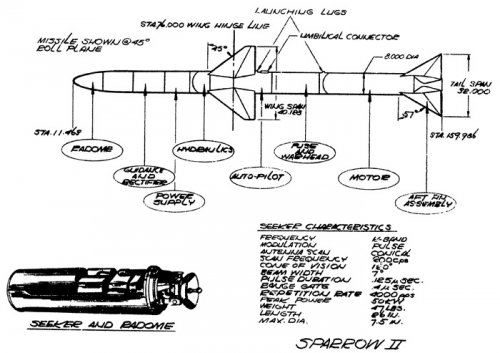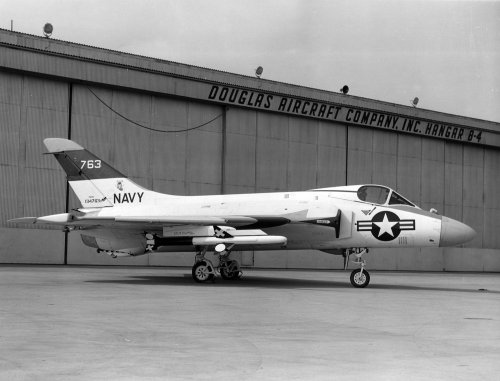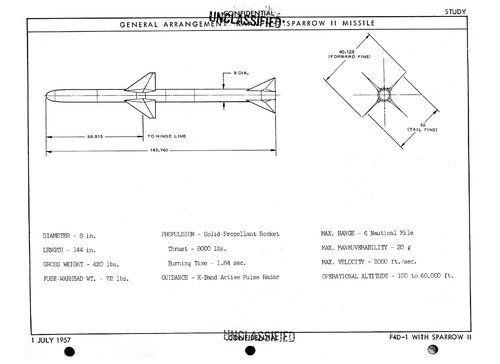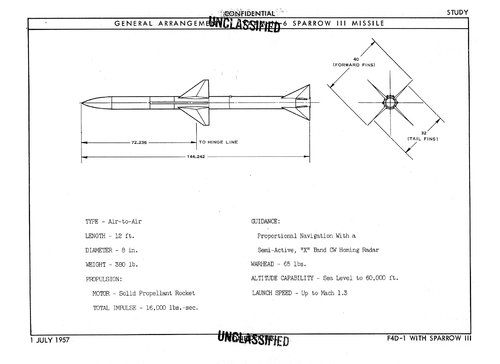- Joined
- 27 December 2005
- Messages
- 17,784
- Reaction score
- 26,738
Length: 148"
Diameter: 8"
Wingspan: 40.128"
Tailspan:32"
Weight: 420lb (warhead: 72lb inc fuse (49lb warhead), seeker 47kg)
Seeker: Bendix AN/DPN-21 active radar seeker
Range: 6nm
Velocity: 3000ft/sec
Altitude: 100-60000ft
Source:
C.M. Hanson: "Characteristics of Strategic, Tactical and Research Missiles", Convair San Diego, 1954/58
Diameter: 8"
Wingspan: 40.128"
Tailspan:32"
Weight: 420lb (warhead: 72lb inc fuse (49lb warhead), seeker 47kg)
Seeker: Bendix AN/DPN-21 active radar seeker
Range: 6nm
Velocity: 3000ft/sec
Altitude: 100-60000ft
Source:
C.M. Hanson: "Characteristics of Strategic, Tactical and Research Missiles", Convair San Diego, 1954/58





